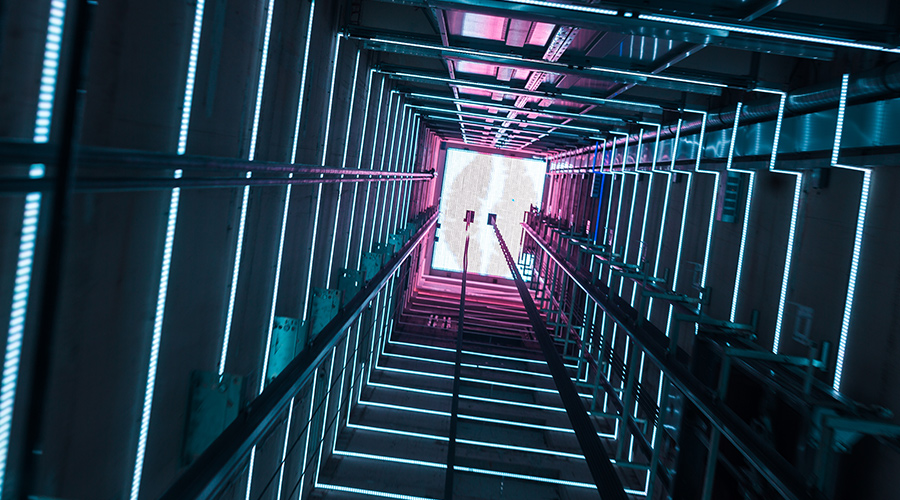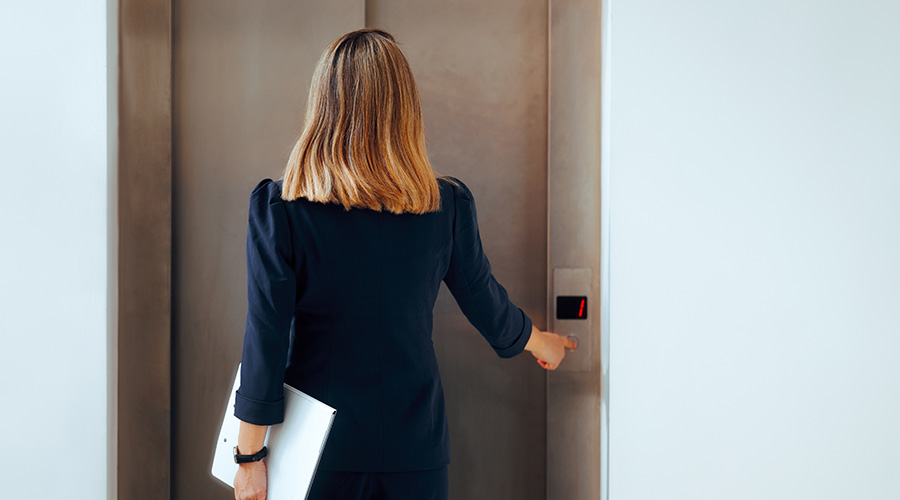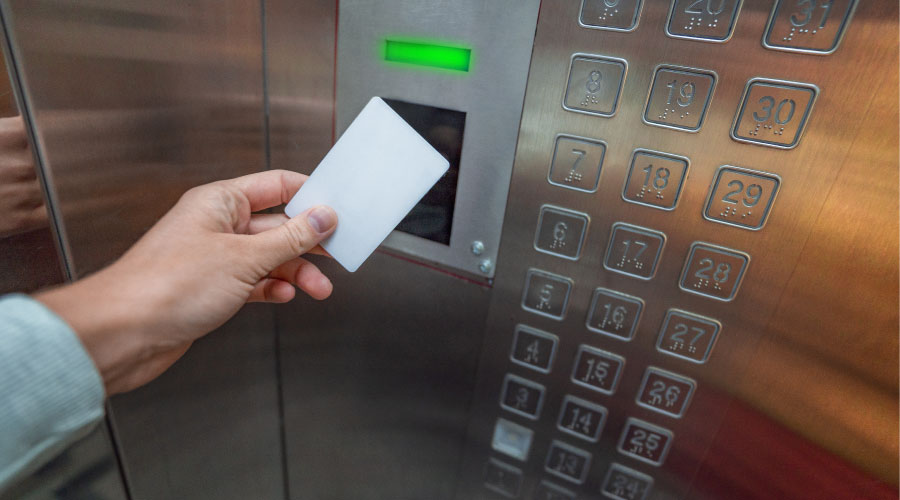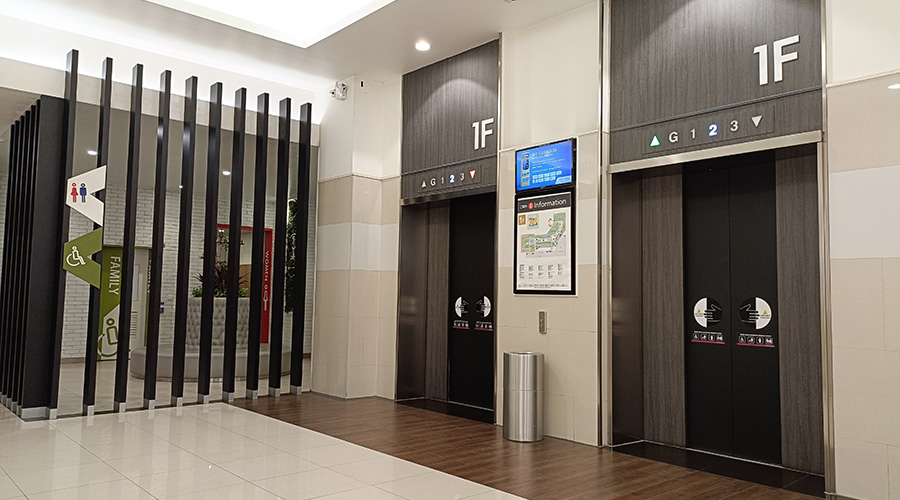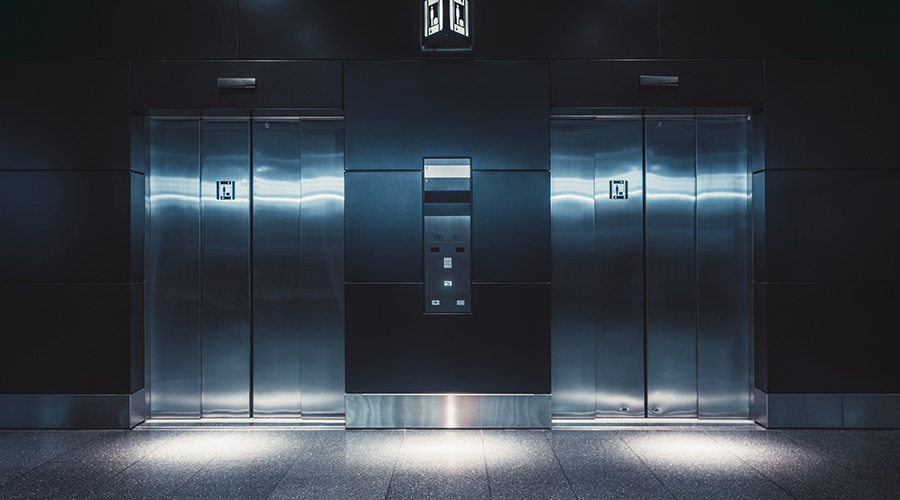Pros and Cons of Machine Room-Less Elevators
Facility managers should understand the specific features and benefits of MRLs and make sure the product and design matches the needs for their facility
By Lawrence Marley, Contributing Writer
Over the years the term “mid-rise” has changed to refer to different types of buildings, but the term always has the same connotation: Buildings that are “in-between.” That is, buildings with a total run height that would be in-between what a traditional hydraulic elevator and a traditional traction elevator would serve. This is the “hole” between the two elevator designs that has seemingly always existed. For a practical reference, these are buildings that have more than six to eight floors, or 90 to 120 feet of total travel, and less than 12 to 13 floors, or 140 or 150 feet of travel. That incorporates many buildings.
This is not to infer that the hydraulic elevator or the traction elevator cannot serve these mid-rise runs. They certainly can, but at a cost. In both a literal and an unintended sense. For a hydraulic elevator to service taller buildings, you must both pay more and give up something: speed. Hydraulic elevators cannot travel more than 150 to 200 feet per minute, and on taller buildings, this means it takes longer to travel up and down. It also means longer wait times for the passengers the elevators serve. Additionally, these higher run hydraulic elevators will require a two or three stage jack, which is more expensive to buy and maintain than hydraulic elevators serving shorter runs.
Traction elevators, on the other hand, can travel at much higher speeds, with the standard 350 feet per minute running speed easily handling the mid-rise buildings highest net travel. However, a traditional traction elevator is much more expensive than even the most expensive hydraulic. In a practical sense, you can expect to spend around 50 percent more on a traditional traction elevator compared to a hydraulic elevator. Further, there are many more moving parts on a traction elevator and the overall maintenance costs are higher.
Over the years, there have been several designs that were intended to fill the cost gap between traction and hydraulic elevators. These designs included the roped hydraulic, the twin post, and the machine room-less hydraulic. Some, like the twin-post and machine room-less hydraulic, are still in use today for various reasons unrelated to the mid-rise building. In the early 2000s, changes in material technology, along with improvements in finite element analysis software, allowed for lighter weight cabs and smaller diameter drive sheaves. This allowed for new hoisting options, such as the smaller diameter hoisting ropes or a hoisting belt. By the late 2000s, a new type of traction elevator had been born: the small gearless traction or machine room-less traction, which would now simply be called the MRL.
MRL: The younger brother
An MRL, in many ways, is the younger brother of the traditional traction elevator. This would mostly be due to the generally smaller size of all the operational components. The driving force behind its creation was the reduced size of the hoisting motor. This involves a much smaller drive sheave, which in turn allows for a smaller overall vertical footprint. This change spawned the ability to mount all the elevator equipment in the space above the top landing, which is commonly referred to as the “overhead”. No more machine room, and everything is now located in the hoistway with all the other elevator equipment.
At its conception, the MRL was strictly intended as a way to fill the gap between the two traditional styles. Mostly because the MRL had some particular challenges from both a design and a maintenance standpoint. This gets to the heart of what the MRL elevator is, and what it is not. If you look at the primary difference between an MRL and the other two basic designs, there is both a net positive and a net negative. The net positive would obviously be that the elevator takes up less room in the building, as it does not incorporate a machine room. For both architects and contractors, this seems like a huge win. However, for installers and maintenance it is a negative. This is due to where the equipment for the elevator is located and how it is installed.
So, let’s focus on the positives for the MRL design. Obviously, taking up less space in a building, as previously discussed, is a positive. The lack of a machine room or equipment room means that there is more room in the building for things unrelated to vertical transportation. Next, the cost of the MRL is significantly less than a traditional traction elevator. While not quite as cheap as a hydraulic, it’s within 10 percent or so depending on options. Plus, you have the last positive, which is performance. You get all the speed and ride quality of a traction elevator at a cheaper price. Combine all of that and you get a very good option.
However, there are negatives, and most of them are on the back end. First and foremost, you have maintenance. With all the elevator equipment located in the overhead, maintenance is difficult at best. When a problem occurs, the downtime for an MRL can be much longer than for a traditional traction elevator. This can depend on which generation of MRL you have, as initially the controller was placed in the overhead. This was a mistake, as it made access to the controller impossible if the car was immovable. Next, they were located in the door jamb. This worked but overheating and the inability to limit access (i.e., security issues) made it an undesirable option. The latest solution is a controller cabinet -- a room in the building where you put the controllers. While not as large as a machine room, it’s still a place in the building for elevator equipment. This is all in the name of limiting down time and facilitating preventative maintenance.
Other negatives are things that have manifested themselves as the products have been in use. One is rope or belt wear. This issue is predicated on the number of trips per day the elevator takes. However, the smaller diameter hoisting ropes and the rubberized belts have proven to have a shorter life span than their traditional ½-inch or 5/8-inch hoisting rope cousins. For an average use elevator, traditional larger hoisting ropes can be expected to last between eight and 10 years. The hoisting ropes and belts for MRL elevators have been shown to last approximately five years. Over the life span of an elevator, this will result in twice as many rope replacements, which results in much higher costs to replace them as well as much more down time.
Regarding life span, a traditional traction or hydraulic elevator would be expected to last between 20 and 30 years with many hydraulic elevators lasting longer. The old caveat of usage must be mentioned here, of course. MRL elevators, on the other hand, have proven to last more in line with a 15 to 20-year life span. This would mean that over the life of a building, you may be required to initiate multiple modernizations of your elevators, while a traditional elevator might not need one.
An MRL example of what not to do
Let’s look at an example at a hospital in Alabama. The hospital had two banks of three MRL elevators for six total elevators. Each elevator served six floors. On the surface this seems like an ideal application for MRL elevators. However, after five years, the elevators were showing significant signs of wear. The ropes of at least four of the six elevators needed to be replaced. Additionally, there had been multiple entrapment events leading to the replacement of the interlocks and hoistway switches on two of the elevators. It was ultimately decided that after 10 years, a full modernization of all the elevators was required.
The cause was simple: excessive usage. Hospitals and condominiums are known for having particularly high usage rates on vertical transportation devices. Elevators in an office building or hotel are known to have crush times in the mornings, at noon, and in the evenings with light traffic the rest of the day. However, hospital and condominium elevators are known to be in constant usage. Additionally, people that work in office buildings and hotels tend to be younger, with some taking the stairs for convenience or exercise. In a hospital or condominium this is rarely the case. Practically everyone who is travelling from one floor to the other, even if it is just one floor above or below, will utilize an elevator. The simplest and best answer for this application was not the sexy shiny new toy, but instead the tried and reliable hydraulic elevator.
Another example of an improper application was far more obvious. It involved a series of railway stations in Canada. Each station had two elevators that served two floors. A total of 23 railway stations were being constructed. As the MRL was the newest type of elevator, the sales press was applied, and the decision was made to switch from hydraulic to MRL elevators. Almost immediately after completion of the first station, issues surfaced. The elevator that served the platform performed poorly due to the extreme cold temperatures causing controller problems. The interior elevator had some issues as well, due to the amount of moisture brought in by passengers creating oxidation issues. Within five years of service, both of the elevators in the first station required a partial modernization.
MRL elevators are likely here to stay, just like electric cars and Wi-Fi enabled appliances. The question is how they should be used, and how we should use them with a smart approach to both design and longevity. You wouldn’t buy an electric car if you wanted to consistently drive 300 to 400 miles a day. Similarly, you should not put an MRL in an application where usage rates are high, or you have issues with environmental factors. Certainly, you wouldn’t replace a two-stop hydraulic with an MRL. It probably also wouldn’t be a good idea to replace a 15- or 20-story building with an MRL over a traditional traction; there isn’t enough potential front-end cost savings to cover the extra maintenance or long-term modernization costs. While the current infatuation with the MRL may well be a phase, in the interim, making smart decisions will save time and money on your projects.
Lawrence Marley is a registered professional engineer with more than 25 years of expertise related to vertical transportation. He is a Mechanical and Electrical Practice Leader at Rimkus, a global engineering and technical consulting firm.
Related Topics:








